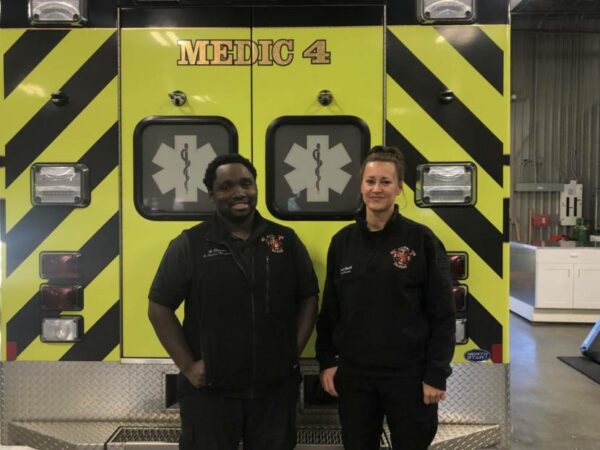
In an emergency, paramedics in Nikiski might have 30 minutes with a patient before dropping them at the hospital. They likely won’t meet again until that patient has another emergency.
The Nikiski Fire Department is working to change the nature of that relationship. It’s using a grant from the state to build its capacity to address people’s medical needs at home and reach them before — and long after — they’re in crisis.
Listen to this story:
The immediate goal of Niksiki’s program is to reduce the COVID-19 patient surge at Central Peninsula Hospital. But paramedics hope the program could also be a way to build trust with patients in the service area.
Senior Emergency Medical Services Captain Harrison Deveer said the health care model, called mobile integrated health, is used all over the country.
“We’ve always kind of done something like that, just because of where we live, in a remote place in Alaska,” Deveer said. “Most people don’t have primary care providers. So 911 becomes their primary care provider.”
Normally Niksiki EMS will get a call, take care of the emergency and deliver a patient to Central Peninsula Hospital. But they don’t always follow up with patients after the fact, which is a problem when they’re not regularly seeing a doctor.
“And so then we end up seeing these people over and over again,” he said. “In worse shape.”
Deveer said the mobile integrated health model is a way to preempt hospital visits by helping people before and after they’ve had an emergency.
“We just started this program a week ago, and we’ve already identified multiple people that we’ve got scheduled to go visit,” he said.
The Nikiski Fire Service Area is getting $316,015 from a state grant for the program. The money comes from the latest federal COVID-19 relief act and is distributed by the Alaska State Office of Emergency Medical Services.
The biggest cost is payroll. Deveer said the department is bringing on off-duty paramedics to staff the mobile center.
The primary objective of the grant is to reduce the number of people visiting the hospital for COVID-19 by bringing services like monoclonal antibodies, testing and vaccines to people’s doorsteps.
Earlier this fall, the hospital was often overcapacity due to high numbers of coronavirus patients. But paramedics hope the program could have implications beyond COVID-19.
Paramedic Jessica Smith said she’d like to see them work with patients who are struggling with mental and behavioral health.
“Especially right now, with everything going on, that’s been a huge gap,” Smith said. “And so getting people connected with mental health providers, as well as substance abuse prevention programs, things like that.”
And follow-through, she said, is a big part of the program. Paramedics will stay in touch with patients once they’ve seen them, so they don’t fall through the cracks after that first visit.
Deveer said the program could also help patch a lack of trust in the health care system.
“We’re struggling to get people vaccinated,” he said. “We’ve got something good to help end this pandemic, and people are afraid to do it because they’ve lost significant trust in the health care system. So programs like this help educate people because there’s a lot of misinformation.”
He said educating people and meeting their needs at home could be an avenue to restoring that trust.
“We were at one of our patients’ houses last week who went shopping and bought us chocolate-covered cherries because we are her family,” he said. “Because, unfortunately, not everyone has an extended family that’s there to take care of them. So we become that extended family.”
The lifespan of the grant is in flux. Deveer said he’s hoping for at least six months, with the possibility of continuing the program without the grant into the future.
[Sign up for Alaska Public Media’s daily newsletter to get our top stories delivered to your inbox.]




